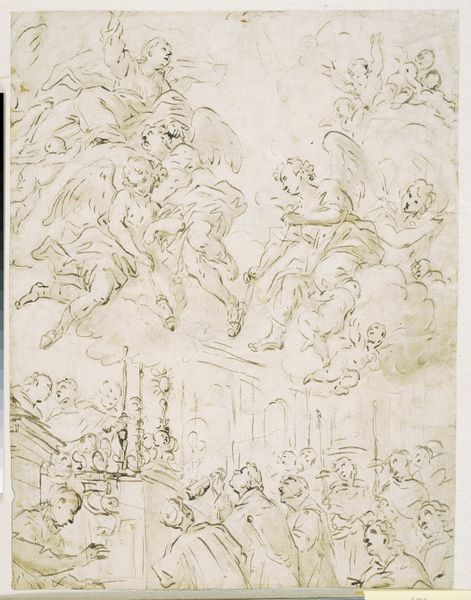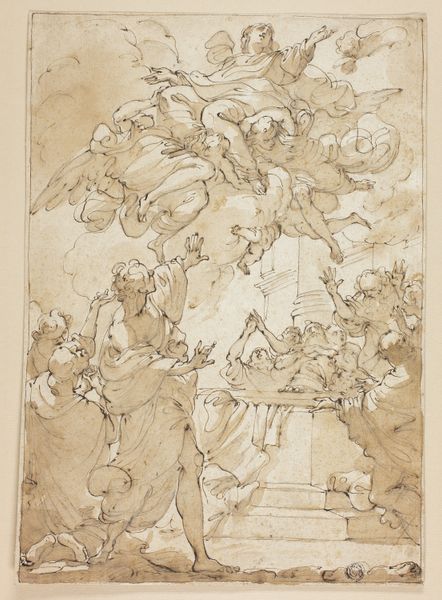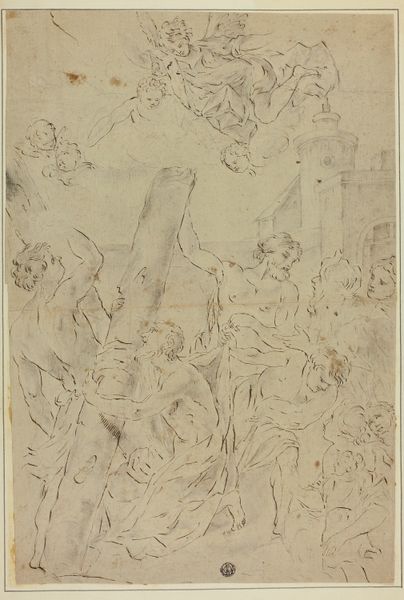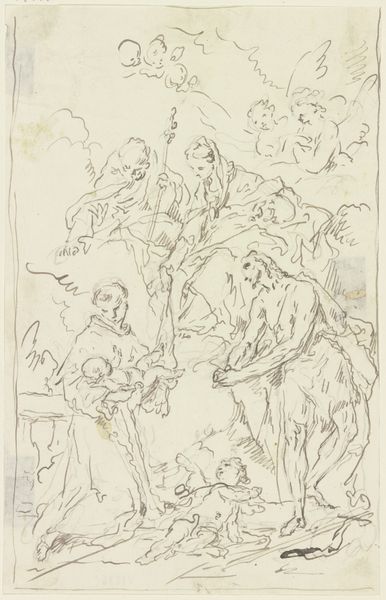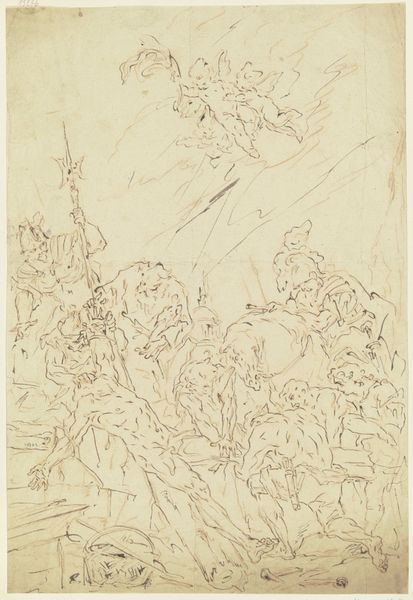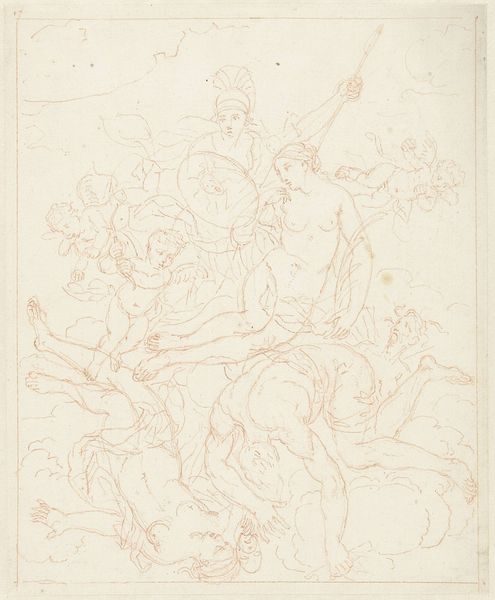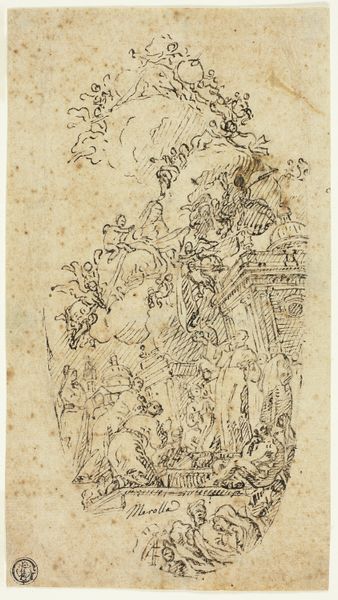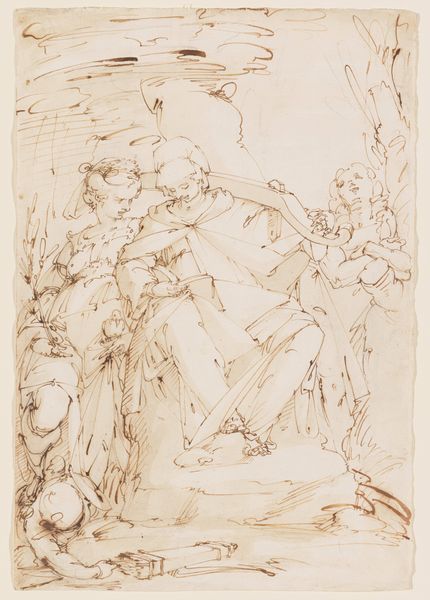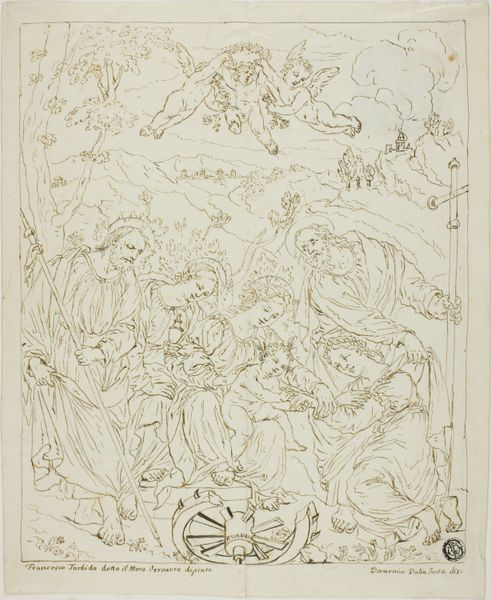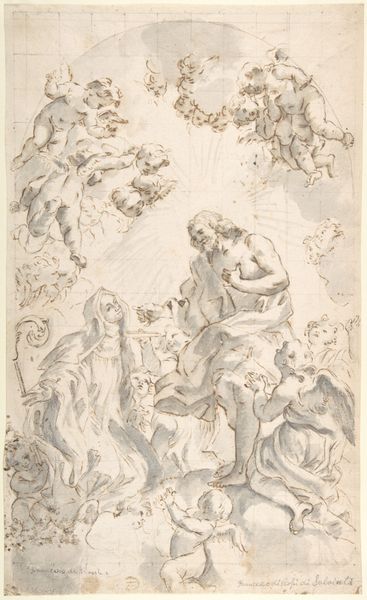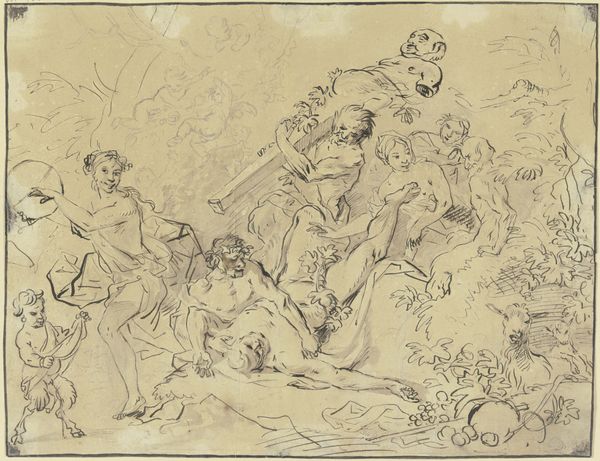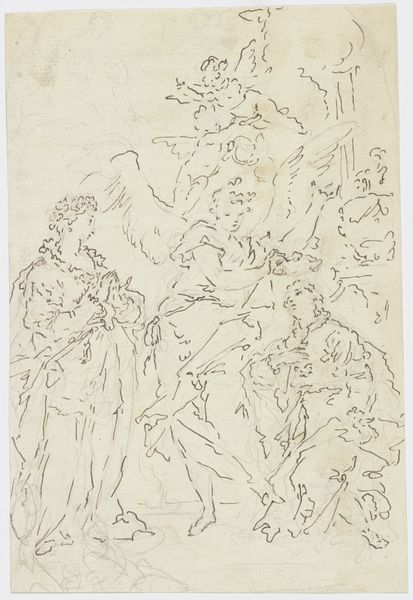
drawing, ink, chalk, graphite, pen
#
drawing
#
baroque
#
pen illustration
#
pen sketch
#
figuration
#
ink line art
#
ink
#
chalk
#
15_18th-century
#
line
#
pen work
#
graphite
#
pen
#
history-painting
Copyright: Public Domain
Curator: Gaspare Diziani's "The Annunciation," dating from around 1747, captures the biblical scene with delicate energy. It resides in the Städel Museum's collection. Editor: My initial impression is one of airy lightness, almost as if the scene is dissolving into light itself. The composition feels quite dynamic. Curator: Indeed, the artist utilizes a combination of pen, ink, chalk, and graphite. The layering of these materials emphasizes the textures, the pen strokes delineate the figures sharply. The baroque style is evident not just in subject matter, but in the artist’s use of humble, yet dynamic, media and their application. The production of this work, of sacred themes on paper via sketching may be a process we read to connect to mass culture via easily circulated prints. Editor: Yes, the swirling clouds, the outstretched arm of God, and the angel's dramatic pose all create a sense of movement. And look at how Diziani uses line—a nervous, almost frenetic energy runs throughout, suggesting the divine intervention is disruptive, in a formal reading, breaking into the earthly sphere of the virgin’s domicile. The whole thing is designed, in its formal nature to instill a feeling, awe if you will. Curator: Think too, that the rapid, sketchy lines also point towards the economic conditions under which it was produced; perhaps he had many of these sketches in production to create quick assets or easily sold versions for religious instruction or remembrance. It’s something that encourages questions around religious art’s consumption as not simply an object of worship, but part of early capitalist modes of religious devotion and social ritual. Editor: That tension between the sacred and the commercial is fascinating. Looking at the work itself though, consider the placement of the Virgin, kneeling humbly before the angel – her reaction is beautifully captured in this sketch, in both form and content. The whole work relies on implied drama! Curator: These Baroque artists understood how to harness social concepts such as performative displays of emotion through the tools of printmaking, and mass dissemination! Editor: Well, either way, this sketch successfully captures a potent moment through remarkably economic deployment of the humble line, whatever drove it’s method of creation. Curator: Yes, from the perspective of production, one that we should reflect on to better examine 18th century Italian culture through materiality, "The Annunciation" prompts inquiries into the relationship between devotion, artwork, and its proliferation via paper goods!
Comments
No comments
Be the first to comment and join the conversation on the ultimate creative platform.
